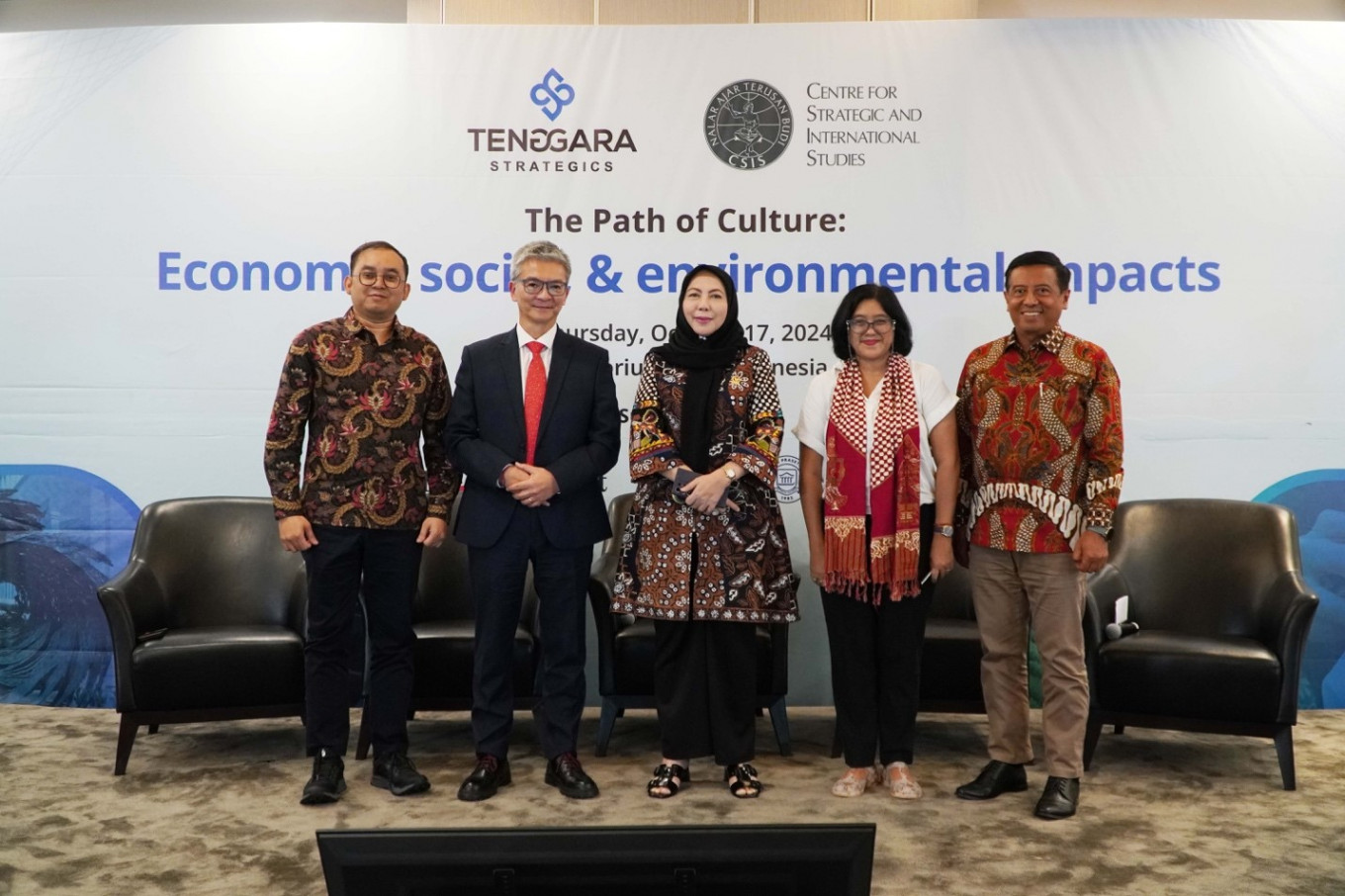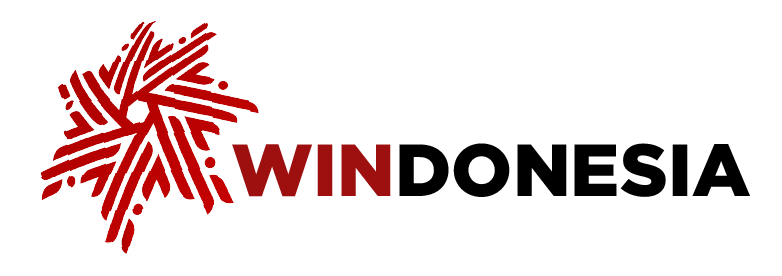News
The Path of Culture: Economic, Social and Environmental Impacts
Galby R. Samhudi (The Jakarta Post) October 29, 2024 Tenggara Strategics researcher and Prasetiya Mulya University lecturer Teddy Trilaksono (from left), UNIDO country representative for Indonesia and Timor-Leste Marco Kamiya, House legislator Himmatul Aliyah, and University of Indonesia cultural expert Lil
Tenggara Strategics researcher and Prasetiya Mulya University lecturer Teddy Trilaksono (from left), UNIDO country representative for Indonesia and Timor-Leste Marco Kamiya, House legislator Himmatul Aliyah, and University of Indonesia cultural expert Lil
Tenggara Strategics, in collaboration with the Centre for Strategic and International Studies (CSIS) Indonesia, hosted a public discussion and unveiled a study titled "The path of culture: Economic, social and environmental impacts," which highlights the vast contributions of Indonesia's rich cultural assets.
Speakers at the discussion included the United Nations Industrial Development Organization (UNIDO) country representative for Indonesia and Timor-Leste Marco Kamiya, House of Representatives member from the Gerindra Party Himmatul Aliyah, cultural expert from the University of Indonesia Lily Tjahjandari and researcher from Tenggara Strategics and lecturer at Prasetiya Mulya University Teddy Trilaksono.
Teddy explained that the study, conducted by Tenggara Strategics from July to September 2024, shed light on economic, social and environmental contributions of cultural assets, using case studies of the National Museum, traditional clothes, the wellness sector and the Subak irrigation system in the village of Jatiluwih, Tabanan, Bali.
Traditional fabrics, including batik, play a significant role in the economy, contributing an estimated Rp 10 trillion (US$645 million) from exports, and even more from domestic trade. Additionally, traditional fabric festivals hold the potential to generate Rp 7 billion in revenue per festival.
The National Museum, a vital cultural hub, contributed Rp 372 billion in economic value from ticket sales, events and tenant operations between 2018 and 2023, with the potential to add Rp 2 trillion in asset valuation.
The herbal medicine, wellness and spa sectors also stand out, contributing Rp 23 trillion from herbal products and spa services per year, and an even bigger contribution of Rp 35 trillion from wellness tourism per year. Meanwhile, the Subak irrigation system in the village of Jatiluwih, Bali, contributed approximately Rp 30 billion a year for the village, sourced from tourism activities such as accommodation, restaurants and entrance fees.
The research also underscores the social impact of cultural assets. The National Museum has the potential to deliver a social return on investment (SROI) ratio of 1:4 to 1:5, based on benchmarks from similar institutions, meaning that a US$1 investment would bring social returns worth US$4.
Traditional fabrics could generate a SROI ratio of 1:5 to 1:8, as demonstrated by a medium-sized batik company. The herbal medicine and wellness sector holds the potential for a SROI ratio of 1:5, and the Subak system could deliver a remarkable SROI of 1:29 at the village level.
These contributions highlight the essential role that cultural assets play in maintaining social activities and preserving Indonesia’s rich cultural heritage.
The study also evaluated the environmental impact of cultural assets, revealing their potential to reduce carbon footprints. The National Museum, for example, could lower its carbon emissions by 1,160 tonnes per year, based on benchmarks from other museums using green buildings and renewable energy. Based on an analysis of a medium-sized batik company, traditional fabrics, through the use of natural dyes in batik production, have the potential to reduce carbon emissions by 55.7 tonnes per company per year.
Similarly, based on an analysis of a medium-sized wellness company, the herbal medicine and wellness sector could cut carbon emissions by 17.28 tonnes per company per annum through the use of herbal raw materials, while the Subak system in the village of Jatiluwih could contribute to a reduction of 237.5 tonnes of carbon emissions per hectare annually.
This study illustrates the multifaceted contributions of Indonesia's cultural assets, not only in terms of economic growth, but also in fostering social development and environmental sustainability. The findings provide valuable insights for policymakers and stakeholders to further leverage cultural assets as key drivers of national progress.
Kamiya underscored the importance of sustainable livelihoods for communities that safeguard cultural heritage.
“To preserve this culture, it is necessary that communities owning the culture have sustainable income and livelihood. Then this culture will be protected and grow,” Kamiya told the forum.
Kamiya further highlighted UNIDO’s efforts in fostering local entrepreneurship based on traditional knowledge and cultural assets. He mentioned several programs across the globe, including in Lombok, West Nusa Tenggara, which aim to create added value for local businesses, ensuring that the benefits of cultural heritage are directly enjoyed by the communities that own and preserve them.
Meanwhile, Himmatul reaffirmed her and her party’s commitment to addressing cultural sector issues. She said the incoming administration would form a separate culture ministry, and the House commission under her leadership would ensure that the ministry would work together with 29 public institutions responsible for cultures so that it could create adequate policies for cultural preservation, development and utilization.
“It is important to synchronize all 29 public bodies responsible for the cultural sector. Orchestrating this sector is not an easy task, but we have a great opportunity with the establishment of a dedicated culture ministry by the incoming administration,” Himmatul said.
Lili Tjahjandari emphasized the need to optimize the monetization of Indonesia's cultural heritage. She called on the government to improve the downstream development of cultural products to ensure that communities specializing in these traditions could fully benefit from their expertise.
“We must go all out in sharpening the values of cultural products, as both the producers and users are already in place. I am confident that the proposed culture ministry can address this issue,” Lily added.
As Indonesia moves forward with plans to better support its rich cultural heritage, experts and officials are optimistic that greater government coordination and sustainable development will help protect and grow the country’s cultural wealth.

